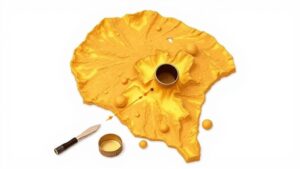Leveraging Historical Weather Records for Treasure and Artifact Hunting Clues
Leveraging Historical Weather Records for Treasure and Artifact Hunting Clues
The pursuit of treasure and artifacts has captivated adventurers and historians alike, leading to diverse methodologies employed in the search for hidden valuables. Among these, the analysis of historical weather records has emerged as a significant tool that not only aids in location selection but also enhances predictive models regarding where artifacts may be found. This article explores the interplay between historical weather data and treasure hunting, showcasing its applications, case studies, and future implications for both amateur and professional seekers.
The Importance of Historical Weather Records
Historical weather records include detailed observations of temperature, precipitation, wind patterns, and other meteorological data collected over extensive periods. Such records can provide invaluable insights when linked to human activity, particularly where treasure hunting is concerned. For example, heavy rains can lead to erosion, potentially revealing previously concealed artifacts. Similarly, drought conditions can expose riverbeds and lake shores that would otherwise remain submerged.
Case Studies: Weather Influencing Treasure Discoveries
- Floridas 1715 Plate Fleet: In 1715, a fleet of Spanish galleons sank off the coast of Florida due to a hurricane. Analysis of historical storm patterns indicates that the hurricane hit the region during the same time of year when Atlantic storms are most prevalent. Modern treasure hunters utilize these historical records to predict other potential shipwreck sites. For example, in 2015, a team discovered gold coins valued at over $4 million, credited to their understanding of storm seasonality.
- The Treasure of the Nuestra Señora de Atocha: This Spanish galleon sank off the coast of Key West in 1622. Historical weather data revealed patterns of extreme weather, leading to targeted searches in areas heavily impacted by storm surges. The successful recovery of over $450 million in treasure has underscored the importance of integrating historical weather data into excavation strategies.
Analyzing Weather Patterns and Archaeological Sites
Beyond maritime treasure hunting, historical weather data can greatly impact land-based archaeology. For example, glacial melt resulting from climatic changes has revealed prehistoric sites under ice fields in places such as Norway and Alaska. Investigators now analyze historical temperature records to anticipate future ice melt and, consequently, the potential exposure of archaeological sites.
Challenges and Considerations
Despite the potential of historical weather data, several challenges persist. The accuracy of weather records can vary significantly, particularly in remote areas where data collection was sparse or absent. Also, weather-related changes may not have been consistently documented in historical texts, leading to gaps in analysis. Also, treasure hunters must navigate legal and ethical considerations, as many historical sites are protected by legislation that prohibits disturbance.
Future Implications and Technologies
Recent advancements in technology, such as Geographic Information Systems (GIS) and remote sensing, are allowing treasure hunters to better visualize historical weather data in conjunction with topographical maps and archaeological records. These technologies can be employed to create predictive models that highlight the most promising sites for investigation.
Also, crowd-sourcing and big data analysis offer potential revolutionizations in treasure hunting. Platforms that aggregate citizen-reported data regarding finds, coupled with historical weather records, could enhance the likelihood of new discoveries. For example, integrating data from social media posts about weather conditions with localized archaeological findings could provide real-time insights into effective treasure hunting strategies.
Conclusion
Leveraging historical weather records provides treasure hunters with a critical framework for enhancing their strategies and predicting successful dig sites. Historical examples illustrate the profound connection between weather patterns and treasure discoveries, emphasizing the need for thorough analysis prior to excavation efforts. As technology continues to evolve, the integration of historical data with modern analytical tools holds promise for uncovering hidden treasures and advancing the field of archaeology.
To wrap up, historical weather records are not just a repository of past conditions but rather a crucial element in the treasure-hunting toolkit that can yield valuable insights and enhance the likelihood of discovery.



